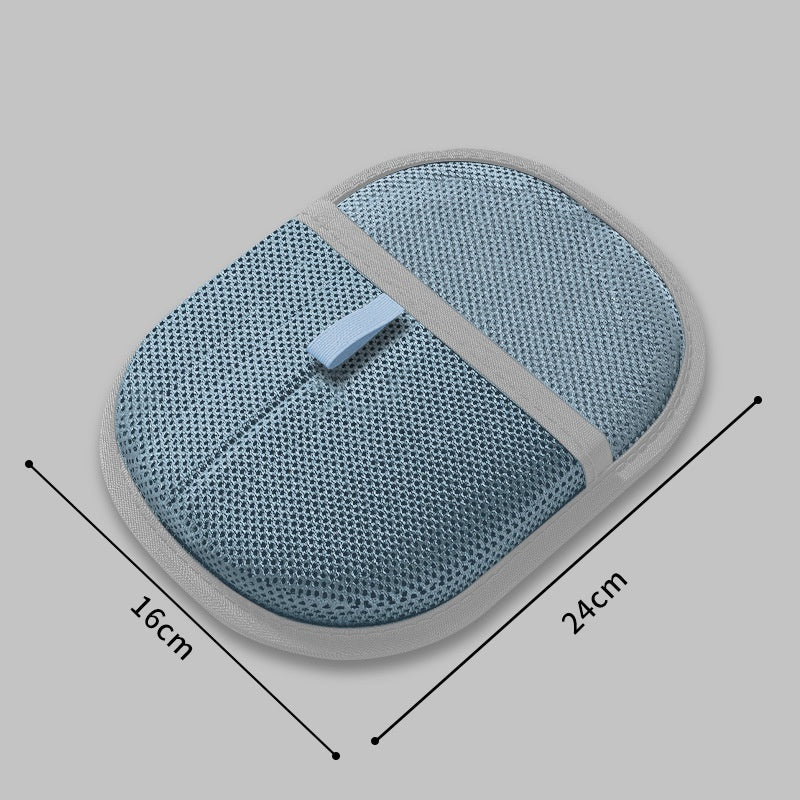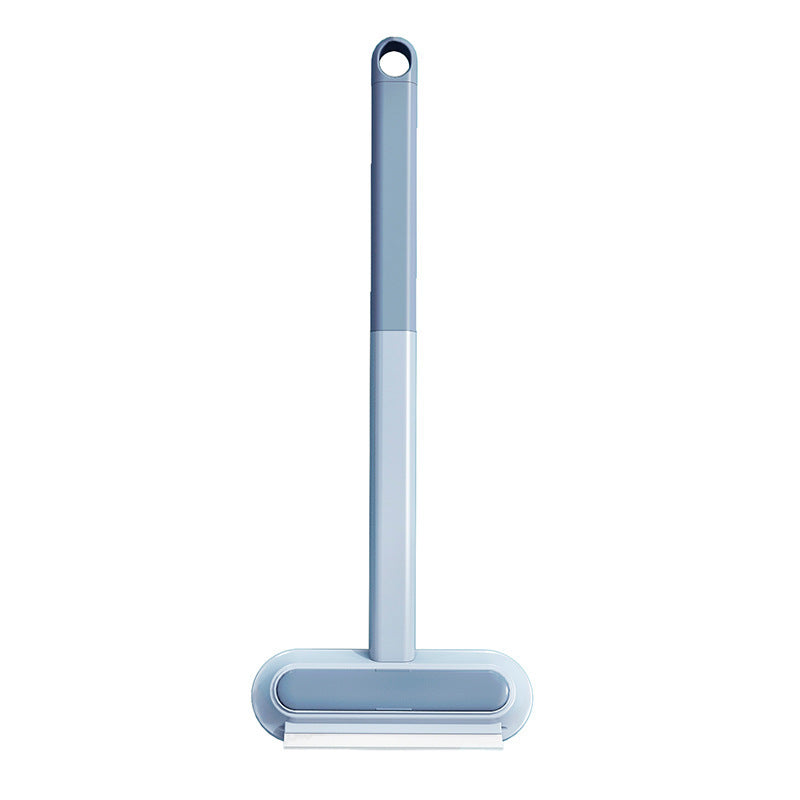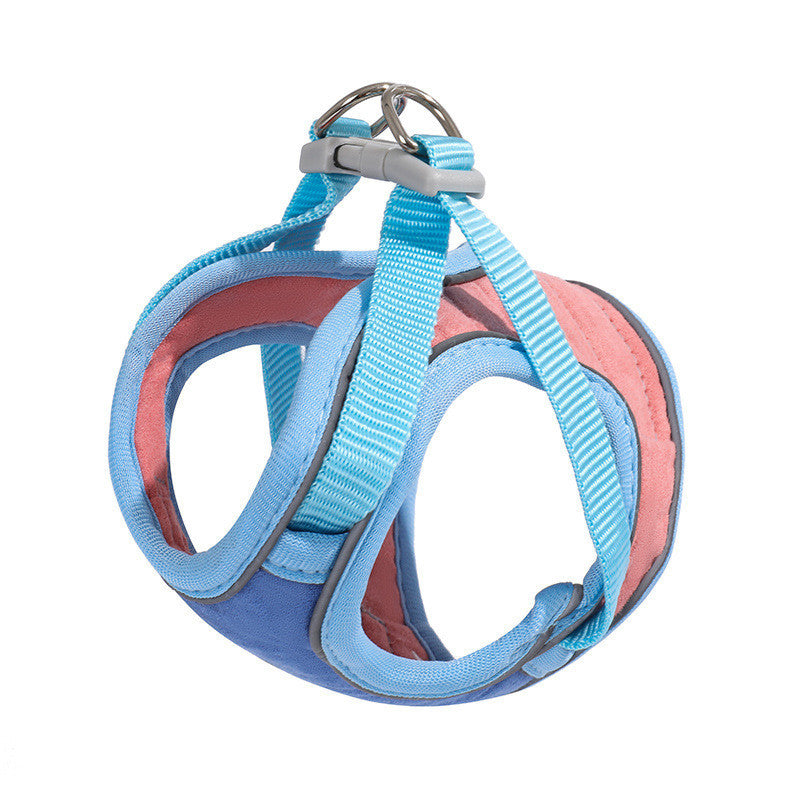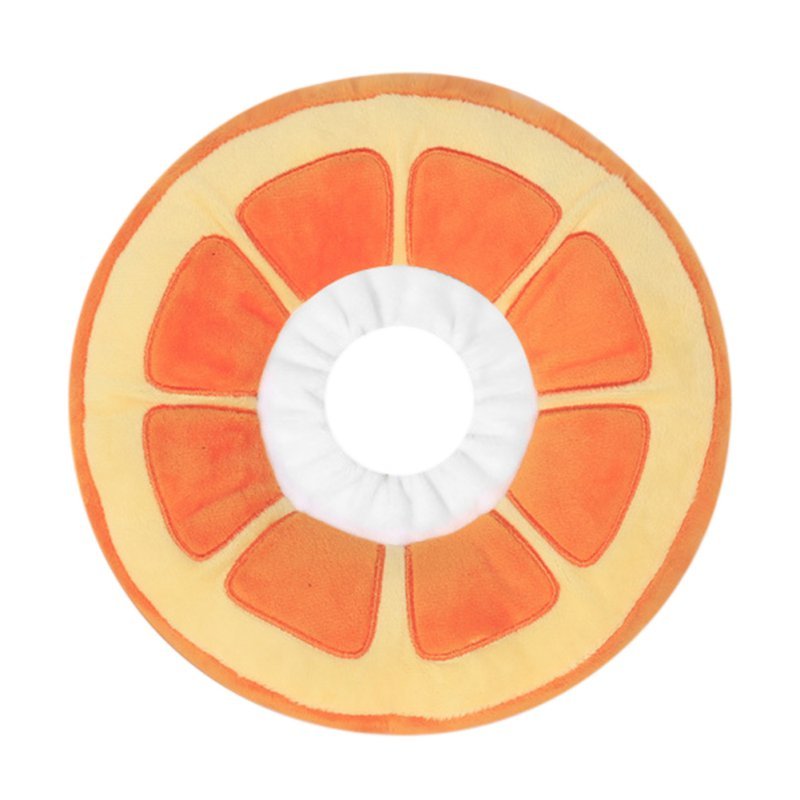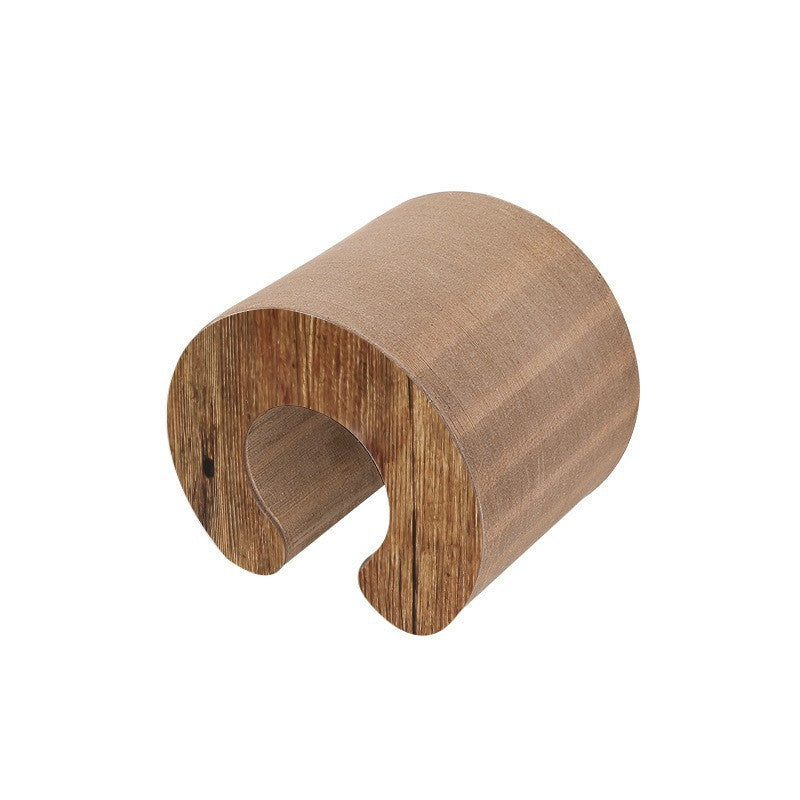Keeping your home clean and hygienic is essential for both human and pet health, but using harsh chemical cleaners can pose serious risks to your cat's wellbeing. Many pet owners don't realise that conventional household cleaning products can be dangerous, even deadly, to their feline companions. The challenge lies in finding effective cleaning solutions that maintain the spotless standards you want whilst ensuring your cat's safety and health.
Cats are particularly vulnerable to chemical exposure due to their unique physiology and natural behaviours. Their meticulous grooming habits mean they're constantly licking their fur, paws, and any surfaces they've walked across. This means that any chemical residues left on floors, furniture, or other surfaces can easily end up in your cat's system. Additionally, cats spend much of their time close to floor level, where heavier chemical vapours tend to settle, making them more susceptible to respiratory irritation from cleaning product fumes.
The excellent news is that you don't have to compromise cleanliness for safety. There's a growing range of effective, pet-safe cleaning products available in Australia, along with simple DIY alternatives that are just as powerful at eliminating dirt, bacteria, and odours. Let's explore comprehensive strategies for maintaining a spotless home whilst keeping your beloved feline friend healthy, safe, and comfortable.
Why Pet-Safe Cleaning Is Critical for Feline Health
Unique Feline Physiology and Vulnerability
Cats possess several physiological characteristics that make them significantly more vulnerable to chemical toxicity than humans or even other pets. Their livers lack certain enzymes, particularly glucuronyl transferase, which is crucial for breaking down and eliminating many common chemicals found in household cleaners. This deficiency means that substances that might be relatively harmless to humans can accumulate in a cat's system, potentially reaching toxic levels over time.
According to comprehensive research published by RSPCA Australia and supported by the Australian Veterinary Association, cats are especially sensitive to phenolic compounds (found in many disinfectants), ammonia-based cleaners, bleach, pine-scented products, and essential oils. These substances can cause a range of health issues, from mild respiratory irritation to severe chemical burns, organ damage, and even death in extreme cases.
Common Household Dangers
Many everyday cleaning products contain ingredients that pose specific risks to cats:
Bleach and Chlorine-Based Cleaners: Can cause severe respiratory irritation, chemical burns to paw pads and skin, and gastrointestinal upset if ingested. The strong fumes can trigger asthma-like symptoms in sensitive cats.
Ammonia-Based Products: Particularly dangerous because cats may mistake the smell for urine, potentially leading them to investigate and ingest the substance. Ammonia can cause severe respiratory distress and chemical burns.
Pine-Scented Cleaners: Contain phenolic compounds that cats cannot effectively metabolise, leading to potential liver damage with repeated exposure.
Antibacterial Sprays: Often contain quaternary ammonium compounds that can cause skin and respiratory irritation, particularly problematic for cats who spend time on cleaned surfaces.
Fabric Softeners and Dryer Sheets: Contain cationic detergents that can cause oral ulcers, drooling, and gastrointestinal upset if cats chew on treated fabrics.
Routes of Exposure and Risk Factors
Cats can be exposed to harmful cleaning chemicals through multiple pathways:
- Dermal contact: Walking on recently cleaned surfaces and absorbing chemicals through paw pads
- Ingestion: Licking paws, fur, or surfaces that contain chemical residues
- Inhalation: Breathing in vapours and aerosol particles, particularly concerning for cats with respiratory conditions
- Direct contact: Investigating cleaning supplies or accidents involving spilled products
Comprehensive Guide to Safe Cleaning Product Options
1. Commercial Pet-Specific Cleaning Products
The Australian market now offers numerous cleaning products specifically formulated with pet safety in mind. These products undergo rigorous testing to ensure they're non-toxic to animals whilst maintaining cleaning effectiveness.
Top Australian Brands and Products:
- Earth Friendly Products (ECOS): Plant-based formulations available at Woolworths and Coles, featuring biodegradable ingredients and no harsh chemicals
- Seventh Generation: Concentrated formulas made from plant-based ingredients, widely available and cost-effective
- Koala Klean: Australian-made, specifically designed for pet households, available online and at specialty pet stores
- Orange Power: Citrus-based cleaners (ensure proper ventilation as some citrus can be problematic for cats in high concentrations)
- Bio-Zet: Enzyme-based cleaners excellent for organic stains and odours
What to Look For:
- Certification labels such as "ACNC Approved" or "Pet Safe Certified"
- Plant-based or mineral-based ingredients
- No artificial fragrances or dyes
- Biodegradable formulations
- Clear ingredient listings
2. Natural Cleaning Ingredients with Proven Safety
White Vinegar: Perhaps the most versatile and safe cleaning ingredient for pet households. Its acetic acid content makes it excellent for:
- Dissolving mineral deposits and soap scum
- Neutralising odours (including urine odours)
- Disinfecting surfaces naturally
- Removing grease and grime
- Mix 1:1 with water for general cleaning, or use undiluted for tough jobs
Baking Soda (Sodium Bicarbonate): A mild abrasive and natural deodoriser that's completely safe for cats:
- Absorbs odours in carpets and upholstery
- Gentle scrubbing action for stains
- Natural whitening agent
- Safe for cleaning food and water bowls
- Can be sprinkled on carpets before vacuuming for odour control
Castile Soap: Made from plant oils, this gentle soap is safe and effective:
- Excellent for floor cleaning when heavily diluted
- Safe for washing pet bedding and toys
- Gentle enough for emergency pet cleanup
- Dr. Bronner's is a widely available, trusted brand
3. DIY Cleaning Solutions: Recipes for Success
All-Purpose Cleaner Recipe:
- 2 cups warm water
- 1/2 cup white vinegar
- 1/4 cup rubbing alcohol (optional, for enhanced disinfection)
- 1-2 drops of pet-safe dish soap Mix in a spray bottle and use on most surfaces (test on inconspicuous areas first)
Heavy-Duty Scrubbing Paste:
- 3 parts baking soda
- 1 part water
- Mix to form a paste consistency Excellent for bathroom tiles, oven cleaning, and stubborn stains
Floor Cleaning Solution:
- 1/2 cup white vinegar
- 1 bucket of warm water
- 2 tablespoons of castile soap Safe for most floor types, leaves no harmful residue
Window and Glass Cleaner:
- 2 cups water
- 1/2 cup white vinegar
- 1/4 cup rubbing alcohol Streak-free cleaning without ammonia-based products
4. Multi-Purpose Commercial Options
Method All-Purpose Cleaner: Plant-based ingredients, available at major Australian retailers, comes in various naturally-derived scents that are generally safe for cats when used as directed.
Ecover Multi-Surface Cleaner: European brand with strong environmental credentials, biodegradable formula, phosphate-free.
Simple Green: Concentrated formula that can be diluted for various cleaning tasks, non-toxic and biodegradable.
Bonami Earth Friendly: Australian-made option focusing on plant-based ingredients and minimal environmental impact.
Safe Cleaning Practices and Application Techniques
Pre-Cleaning Preparation
Remove Your Cat from the Area: Even with pet-safe products, it's best to clean when your cat is in another room or outdoors (if they're an outdoor cat). This prevents them from walking through wet cleaning solutions and reduces exposure to any airborne particles.
Gather Appropriate Tools: Use microfibre cloths, which are more effective at trapping dirt and bacteria than traditional cloths, reducing the need for stronger cleaning products. Invest in a good vacuum cleaner with HEPA filtration to reduce allergens and dust.
Read Labels Thoroughly: Even "pet-safe" products should be used according to directions. Look for specific guidance about ventilation, contact time, and whether rinsing is required.
During Cleaning: Safety Protocols
Ensure Adequate Ventilation: Open windows and doors to promote air circulation. Use fans to help disperse any lingering vapours more quickly. This is particularly important when using vinegar-based solutions, which, whilst safe, can have strong odours.
Avoid Aerosol Products: Spray mists can linger in the air longer and be inadvertently inhaled by cats. When possible, apply cleaning solutions directly to cloths rather than spraying into the air.
Work in Sections: Clean one area at a time, allowing each section to air dry before moving on. This prevents your cat from accessing wet surfaces and reduces overall chemical exposure in the home.
Use Appropriate Dilutions: More concentrated doesn't always mean more effective. Follow dilution instructions carefully, as over-concentrated solutions may leave residues even from safe products.
Post-Cleaning Protocols
Allow Adequate Drying Time: Ensure all surfaces are completely dry before allowing your cat back into the cleaned area. Even safe products can cause mild irritation if cats walk through wet solutions.
Rinse When Necessary: For food preparation areas, water and food bowls, and any surfaces your cat frequently contacts, rinse with clean water after cleaning to remove any residual product.
Proper Storage: Store all cleaning products, even pet-safe ones, in secure cabinets away from pet access. Cats are curious and may investigate containers, potentially causing spills or ingestion.
Monitor Your Cat: After cleaning sessions, observe your cat for any signs of irritation, including excessive grooming, sneezing, watery eyes, or changes in behaviour.
Specific Cleaning Challenges and Solutions
Litter Box and Surrounding Areas
The litter box area requires frequent, thorough cleaning but presents unique challenges due to cats' sensitivity to scents and chemicals.
Safe Approach:
- Use warm water and castile soap for regular cleaning
- White vinegar solution for odour control and disinfection
- Avoid bleach, ammonia, or pine-scented products entirely
- Ensure complete drying before refilling with litter
- Clean the surrounding floor area with pet-safe mopping solutions
Food and Water Station Maintenance
Cats' feeding areas require regular sanitisation to prevent bacterial growth whilst ensuring no harmful residues remain.
Recommended Protocol:
- Daily washing with warm water and mild castile soap
- Weekly deep cleaning with diluted white vinegar solution
- Thorough rinsing after any cleaning product use
- Allow to air dry completely before refilling
- Use stainless steel or ceramic bowls, which are easier to sanitise effectively
Carpet and Upholstery Care
Fabric surfaces present challenges because they can trap cleaning product residues and odours.
Safe Cleaning Strategies:
- Vacuum regularly with HEPA filtration to reduce the need for chemical cleaning
- Baking soda treatments for odour absorption (vacuum thoroughly after treatment)
- Steam cleaning with water only for deep sanitisation
- Enzyme-based cleaners for organic stains (ensure they're pet-safe certified)
- Professional cleaning services that use pet-safe products
Emergency Spill and Accident Cleanup
Quick response to spills and accidents is crucial, but safety shouldn't be compromised for speed.
Immediate Response Protocol:
- Remove your cat from the area immediately
- Blot (don't rub) liquid spills with absorbent cloths
- Use enzyme cleaners specifically designed for pet accidents
- Ensure thorough ventilation during and after cleaning
- Allow complete drying before allowing cat access
Understanding Product Labels and Certifications
What to Look For
Ingredient Transparency: Products should list all ingredients clearly. Be wary of vague terms like "surfactants" or "fragrance" without further specification.
Third-Party Certifications: Look for certifications from recognised organisations such as:
- EPA Safer Choice (DfE) certification
- Green Seal certification
- EcoLogo certification
- GREENGUARD certification
pH Levels: Products with neutral pH (around 7) are generally safer for pets than highly acidic or alkaline cleaners.
Red Flag Ingredients to Avoid
Absolutely Avoid:
- Phenols and phenolic compounds
- Ammonia or ammonium hydroxide
- Chlorine bleach
- Formaldehyde
- Glycol ethers
- Nonylphenol ethoxylates
- Quaternary ammonium compounds (in high concentrations)
Use With Caution:
- Essential oils (some are toxic to cats)
- Citrus-based cleaners (ensure good ventilation)
- Hydrogen peroxide (use only in recommended dilutions)
Creating a Pet-Safe Cleaning Schedule
Daily Maintenance
- Sweep or vacuum high-traffic areas
- Wipe down food and water stations with warm water
- Spot clean any spills or accidents immediately
- Empty and maintain litter boxes
Weekly Deep Cleaning
- Mop floors with pet-safe solutions
- Clean and disinfect litter box area
- Wash pet bedding and toys
- Dust surfaces with damp microfibre cloths
Monthly Intensive Cleaning
- Deep clean carpets and upholstery using pet-safe methods
- Sanitise all pet accessories
- Clean air vents and replace filters
- Assess and refresh cleaning product inventory
Emergency Response: What to Do If Exposure Occurs
Recognising Signs of Chemical Exposure
Immediate Symptoms:
- Excessive drooling or pawing at the mouth
- Vomiting or retching
- Difficulty breathing or wheezing
- Skin irritation or redness
- Lethargy or unusual behaviour
- Loss of coordination
Delayed Symptoms:
- Changes in appetite or water consumption
- Altered litter box habits
- Persistent coughing or respiratory issues
- Skin problems or excessive grooming
First Aid Measures
For Skin Contact:
- Rinse affected area with large amounts of cool water
- Do not use soap or other products unless specifically advised by a veterinarian
- Prevent your cat from licking the affected area
For Ingestion:
- Do not induce vomiting unless specifically instructed by a veterinarian
- Remove any remaining product from your cat's reach
- Contact your veterinarian or pet poison hotline immediately
For Inhalation:
- Move your cat to fresh air immediately
- Ensure good ventilation in the affected area
- Monitor breathing and seek immediate veterinary care if respiratory distress occurs
Emergency Contacts
Keep these numbers readily available:
- Your regular veterinarian's emergency number
- Nearest 24-hour veterinary hospital
- Animal Poison Helpline (if available in your area)
- RSPCA National Information Line: 1300 RSPCA (1300 777 722)
Building Long-Term Healthy Cleaning Habits
Transitioning to Pet-Safe Products
Gradual Replacement Strategy:
- Replace products as they run out rather than discarding full bottles
- Start with the most commonly used products first
- Test new products in small, inconspicuous areas
- Monitor your cat's response to new cleaning routines
Budget-Friendly Approaches:
- Focus on versatile ingredients like vinegar and baking soda
- Buy concentrates to reduce long-term costs
- Make your own solutions using proven recipes
- Share larger quantities with other pet-owning friends or neighbours
Educating Household Members
Family Education:
- Ensure all household members understand which products are safe
- Teach proper dilution and application techniques
- Establish clear protocols for cleaning around pets
- Create easily accessible reference guides for safe cleaning practices
Guest and Service Provider Guidelines:
- Inform cleaning services about your pet-safe requirements
- Provide safe alternatives for guests who might help with cleaning
- Keep unsafe products completely out of the home to prevent accidental use
Maintaining a clean, healthy home whilst protecting your cat's wellbeing is not only possible but can become a rewarding routine that benefits your entire household. By choosing appropriate products, following safe cleaning practices, and staying informed about potential hazards, you can create an environment that's both spotless and safe for your feline companion.
Remember that every cat is unique, and some may be more sensitive than others to certain ingredients or scents. Pay attention to your cat's individual responses and adjust your cleaning routine accordingly. With thoughtful product selection and careful application, you can enjoy a pristine home without compromising your cat's health and happiness.
























